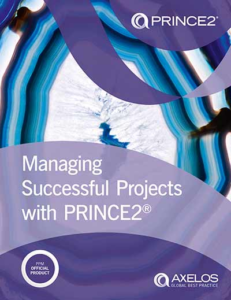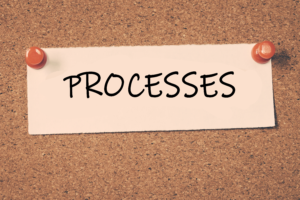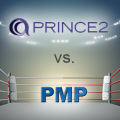
Becoming a PRINCE2 Practitioner is one of the best steps you can take in your career. Every year tens of thousands of people make the leap from technical professional into project management, or start their career in project management, through this certification. It is a very easy certification to obtain, and carries a tremendous amount of prestige with it.
Who is it For?
PRINCE2 Practitioner certification is issued by Axelos in the UK. It is the higher level of two in the PRINCE2 system, the other being PRINCE2 Foundation.
The PRINCE2 Practitioner certification is the main project manager certification under the PRINCE2 system. It is intended for project managers who wish to demonstrate their competence and understanding of the PRINCE2 system.
From Axelos’ website:
This qualification is suitable for anyone managing projects. This could be part of a formal project management function or a role which involves project management as part of day-to-day work.
How Prominent is PRINCE2?
PRINCE2 Practitioner and its competitor, the Project Management Professional (PMP) certification are the two main project manager certifications in the world today. Because Axelos does not publish the number of certified PRINCE2 Practitioners, it not known which one has more certifications – Suffice it to say they are relatively close. However, PRINCE2 is more prominent in the UK, and has a strong following in India, China, and Australia. The PMP is prominent in the United States, South America, and Asia.
The IPMA Level C certification (which can be called different things in different countries), is a similar certification but has a smaller following. It has a strong foundation in continental Europe.
Equivalents
The project management certifications equivalent to PRINCE2 Practitioner are:
- Project Management Professional (PMP), issued by the Project Management Institute (PMI) based in the United States
- International Project Management Associate, Level C (IMPA-C), issued by the International Project Management Association (IPMA) through member associations in each country. These member associations have quite a bit of freedom to tailor the certification to their circumstances, and some countries even change the name of the certification itself. For example, in the UK the official IPMA-C certification is called the APM Practitioner Qualification, issued by the Association for Project Management (APM).
Education Requirements
There is no background education requirement such as a secondary or post-secondary degree to obtain PRINCE2 Practitioner certification.
You also do not need to take any courses to qualify to write the exam.
Experience Requirements
There are no prior project management experience requirements to take the PRINCE2 Practitioner exam and become certified.
Other Requirements
In order to take the PRINCE2 Practitioner exam you must have passed the PRINCE2 Foundation exam. You can take them both in the same day if you are aiming directly for PRINCE2 Practitioner certification.
Since 2014, Axelos has accepted any of the other project management certifications from other organizations in lieu of the PRINCE2 Foundation certificate.
- CAPM (Certified Associate in Project Management)
- PMP (Project Management Professional)
- IPMA Level A
- IPMA Level B
- IPMA Level C
- IPMA Level D
Summary of Requirements
In summary, there is no project management experience, no education requirements, no courses to take, and no CV to submit. You can simply study the manual and then register for the exam. And this is what many people do.
However, there are also many 2-3 day courses offered, after which you write the exam before you leave the course. Online courses are also an attractive option which, like the in-person version, should take about 2-3 days worth of total time if they were to give you a knowledge base sufficient to write the exam.
Because of this, it is a much easier certification to obtain than PMP, which requires several years prior project management experience and a minimum number of course hours with a registered education provider. However, I believe that is recognized in the industry as prestigiously as PMP is. There is some debate on this, however.
Official Textbook
 The official textbook is called Managing Successful Projects with PRINCE2, written by Axelos.
The official textbook is called Managing Successful Projects with PRINCE2, written by Axelos.
Cost
The official textbook is sold directly from the Axelos website for £85 (at the time of this writing), or from Amazon.
In addition to the textbook there is a cost for writing the exam. If you write the exam directly through PeopleCert, the price at the time of this writing is US$469.
Any training courses taken prior to writing the exam are in addition to this.
The Exam
You can study the manual privately and then take the exam at PeopleCert, or you can take a course from an Accredited Training Organization and write the exam directly through them.
The 150 minute, open book exam has 68 questions, which are all multiple choice. The passing grade is 55% (38 out of 68).
Unlike other project management certifications, PRINCE2 Practitioner certification is not intended to demonstrate general project management knowledge or competency, only competence with the PRINCE2 project methodology. For this reason, the PRINCE2 Practitioner exam will not test concepts like earned value management, critical path method, or project estimating techniques. The PRINCE2 methodology is summarized below, and includes seven principles, seven themes, and seven processes. The standard PRINCE2 project organization and management stages are also part of the method.
Maintenance
The certification expires in 3 years, and you must simply retake the exam to maintain the certification.
The PRINCE2 Methodology
PRINCE2, as documented in the official guide Managing Successful Projects with PRINCE2, is divided into three sections:
- Seven Principles
- Seven Themes
- Seven Processes
PRINCE2 Principles
 Principles are universal guiding obligations and good practices that apply to all projects. The seven principles are:
Principles are universal guiding obligations and good practices that apply to all projects. The seven principles are:
- Continued Business Justification. The project must always be grounded in a business case. This justification must be documented, approved, and continually re-validated throughout the life of the project.
- Learn from Experience. The project must learn from previous projects, and ensure that knowledge gained throughout the project is passed on to future projects.
- Defined Roles and Responsibilities. All projects must have an explicit project management team structure, which consists of well defined roles and responsibilities.
- Manage by Stages. PRINCE2 projects must break the project into discrete components called management stages. These are similar to project phases. For simple projects, there must be at least two stages, an initiation stage and an execution stage.
- Manage by Exception. The tolerances of the project’s products must be well defined and measured. Controls must be in place to keep them within tolerance.
- Focus on Products. PRINCE2 projects must be output-focused rather than work-focused. That is, it must be focused on the definition and delivery of products rather than work processes.
- Tailor to Suit the Project. The project management methods must be adjusted to suite the project environment, size, complexity, importance, team capability and risk level.
PRINCE2 Themes
 The PRINCE2 themes are subject areas that must be addressed continually throughout the project. The seven themes are:
The PRINCE2 themes are subject areas that must be addressed continually throughout the project. The seven themes are:
- Business case: The investment proposition on which the project is built.
- Organization: The roles and responsibilities of the project team, executive, project board, etc.
- Quality: The specifications for project quality, how it is measured and what the remedial actions are.
- Plans: Project plans such as schedules, budgets, and work packages.
- Risk: The risk profile of the project, tracking of project risks and management of risk tolerances.
- Change: Policies and procedures relating to project changes – to the schedule, budget, or any other item within the plans.
- Progress: The ongoing monitoring and controlling activities to ensure the project is proceeding as planned.
PRINCE2 Processes
 The processes are the action based procedures that are carried out throughout the stages of the project life cycle, from initiation to project closure. Each process contains checklists of recommended tasks, products that must be produced, and associated responsibilities.
The processes are the action based procedures that are carried out throughout the stages of the project life cycle, from initiation to project closure. Each process contains checklists of recommended tasks, products that must be produced, and associated responsibilities.
The seven PRINCE2 Processes are:
- Starting up a project: This process involves the preparation of the project brief, appointing the project management team and planning the initiation stage.
- Directing a project: The project board is the primary undertaker of this activity, which spans all of the other activities. It involves authorizing the project and each of its management stages, including project closure.
- Initiating a project: Primarily performed by the project manager, this process involves the preparation of the project plans, including the Project Initiation Document (PID). This document contains all of the project planning information, such as Communications Approach, Communications Approach, Quality Management Approach, Project Controls, and Change Control Approach.
- Controlling a stage: Each management stage must consist of authorized work packages, which are monitored and controlled, and related issue tracking.
- Managing product delivery: This low level task is primarily carried out by the team manager (or project manager for small projects) and involves the day to day assignment of work tasks.
- Managing a stage boundary: This process involves planning of the next management stage, updating the project plan, and preparing for the next stage of the project.
- Closing a Project: As the project finishes, the tasks required to close the project and review the benefits achieved fall into this, final, process.
Learn More
To learn more, surf the Axelos website and make sure you check out the PRINCE2 Practitioner page.






